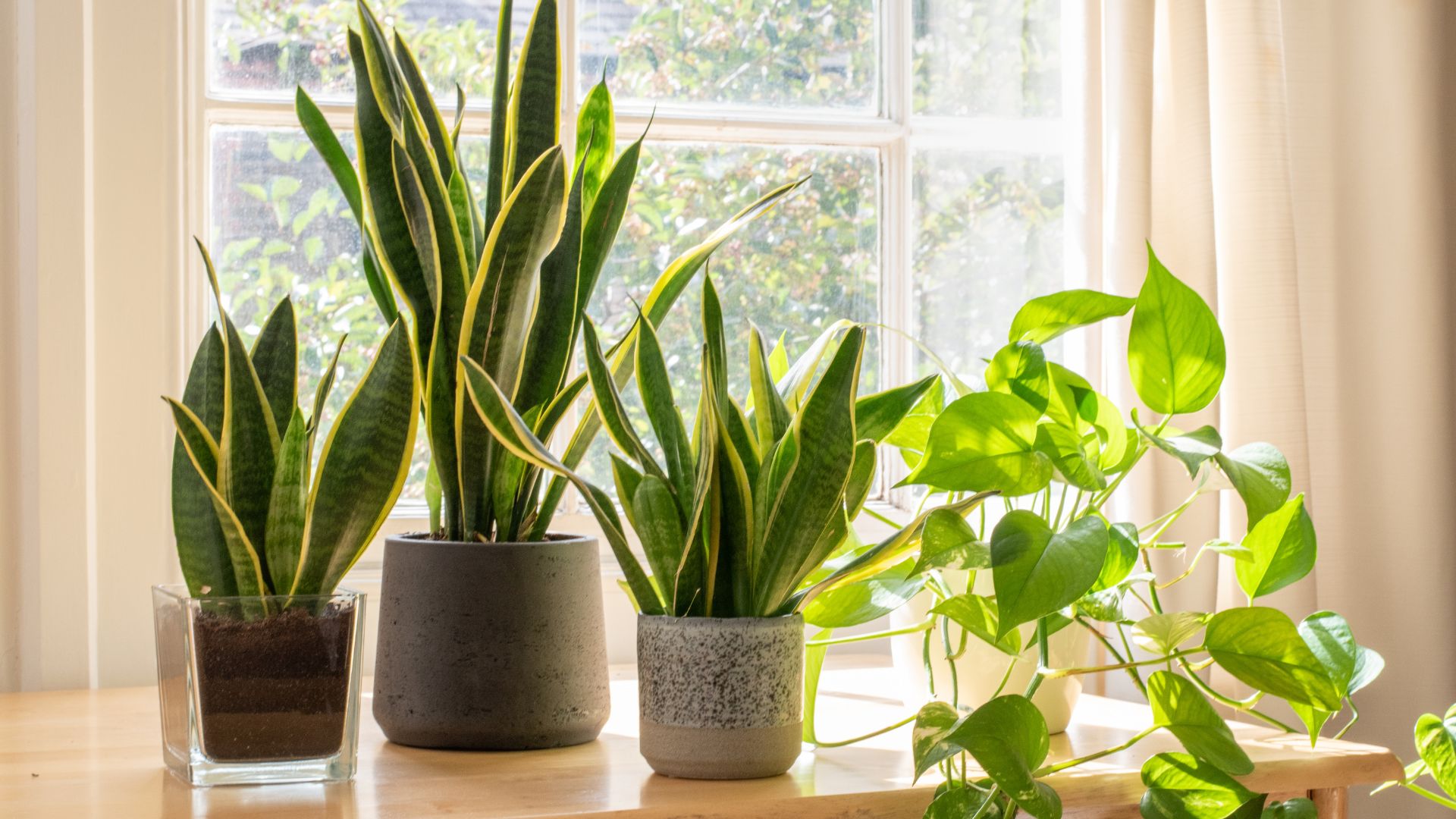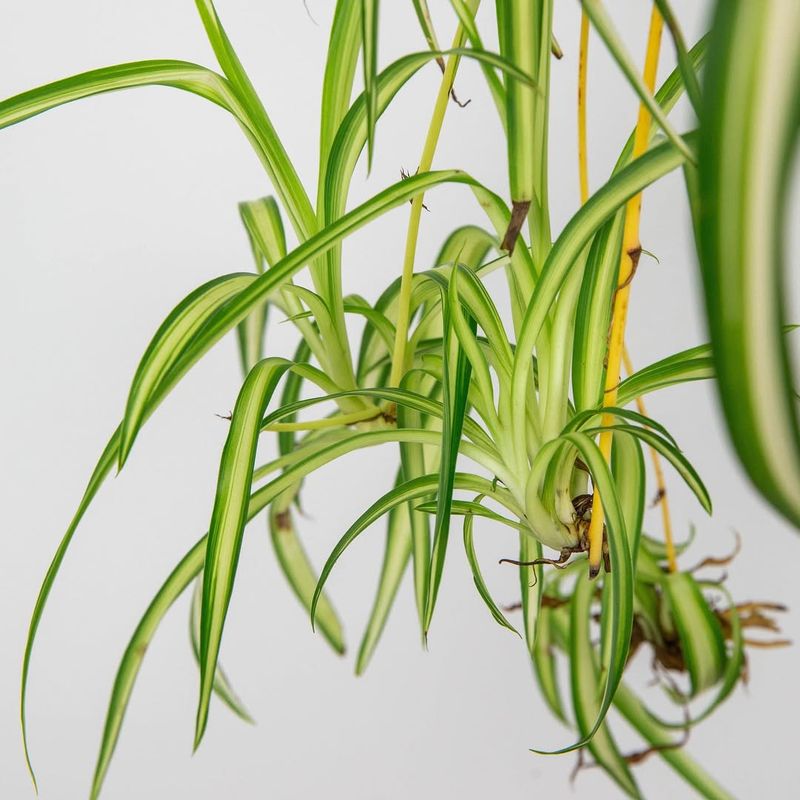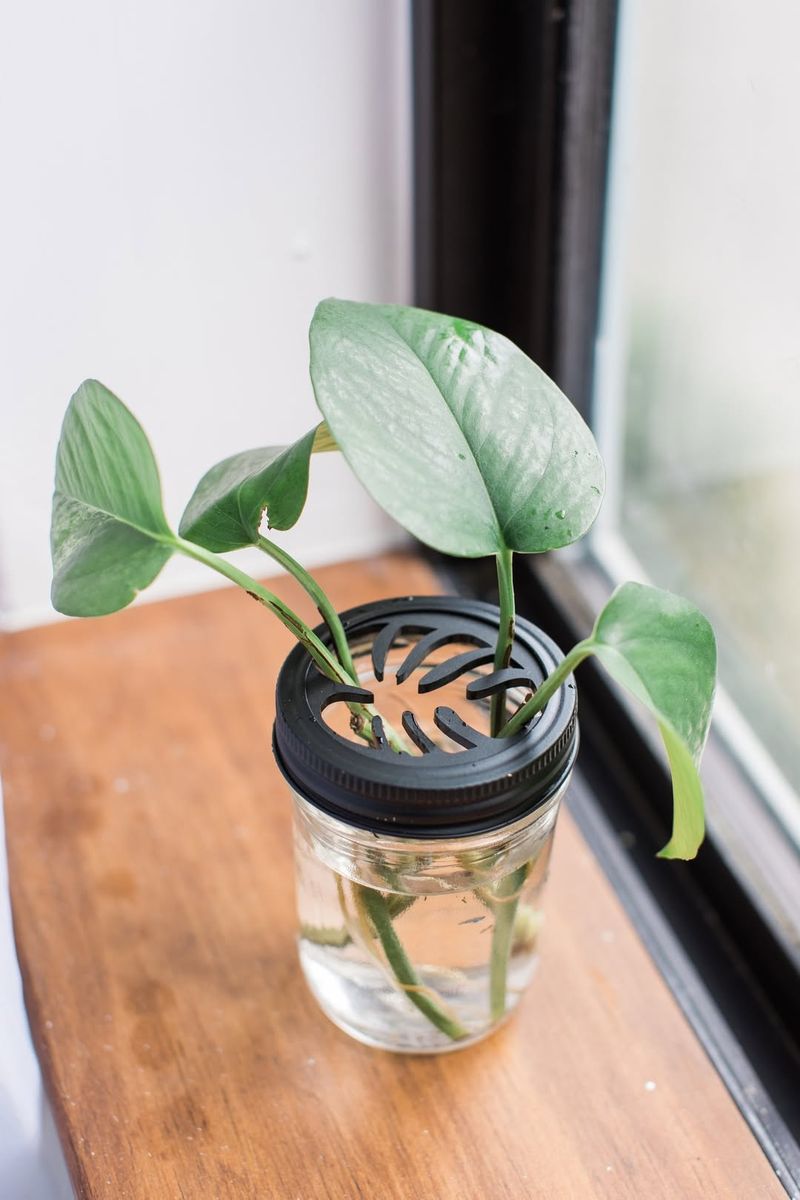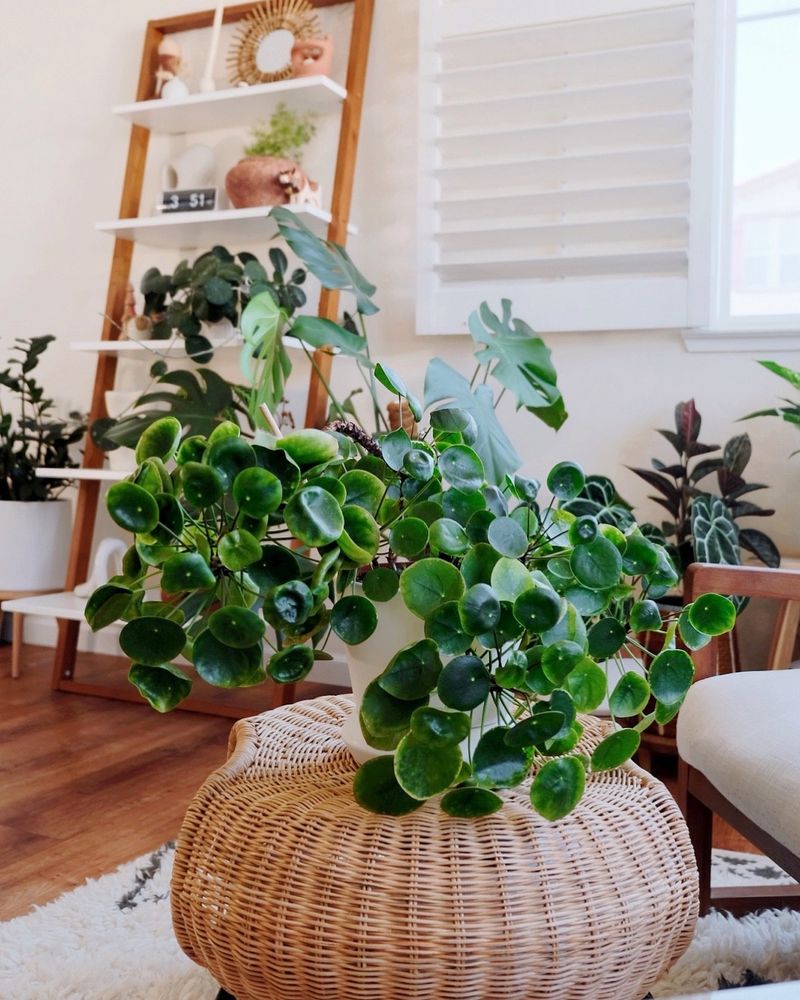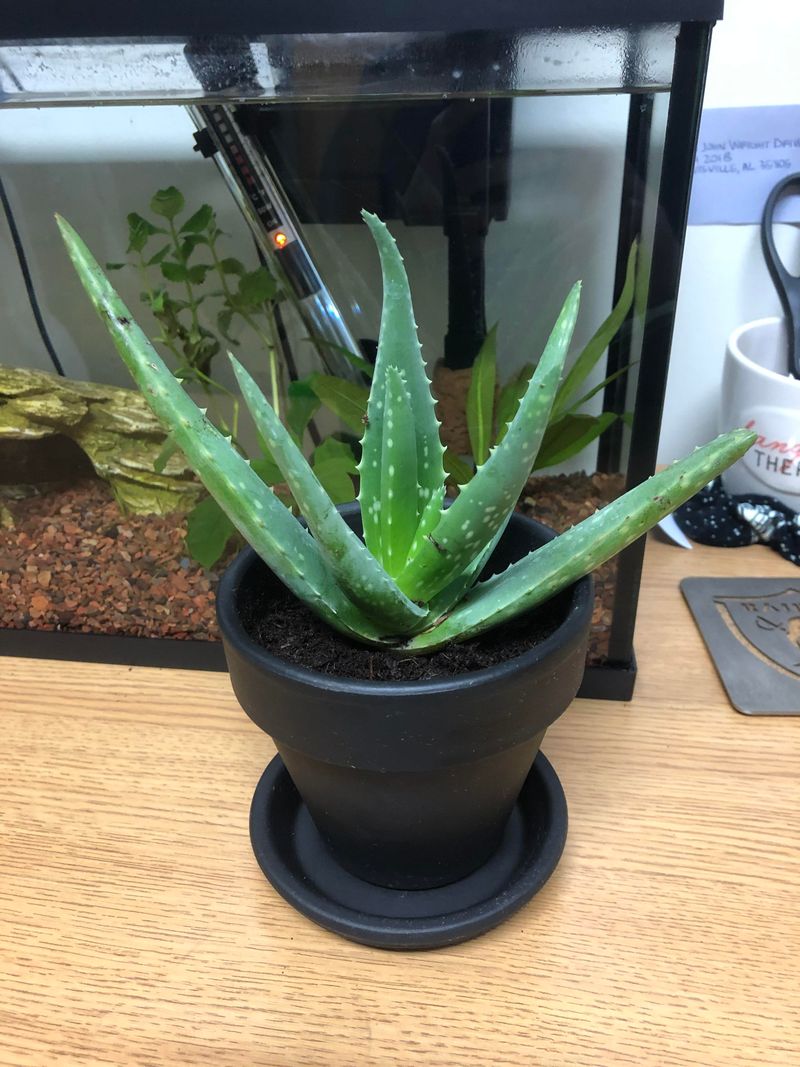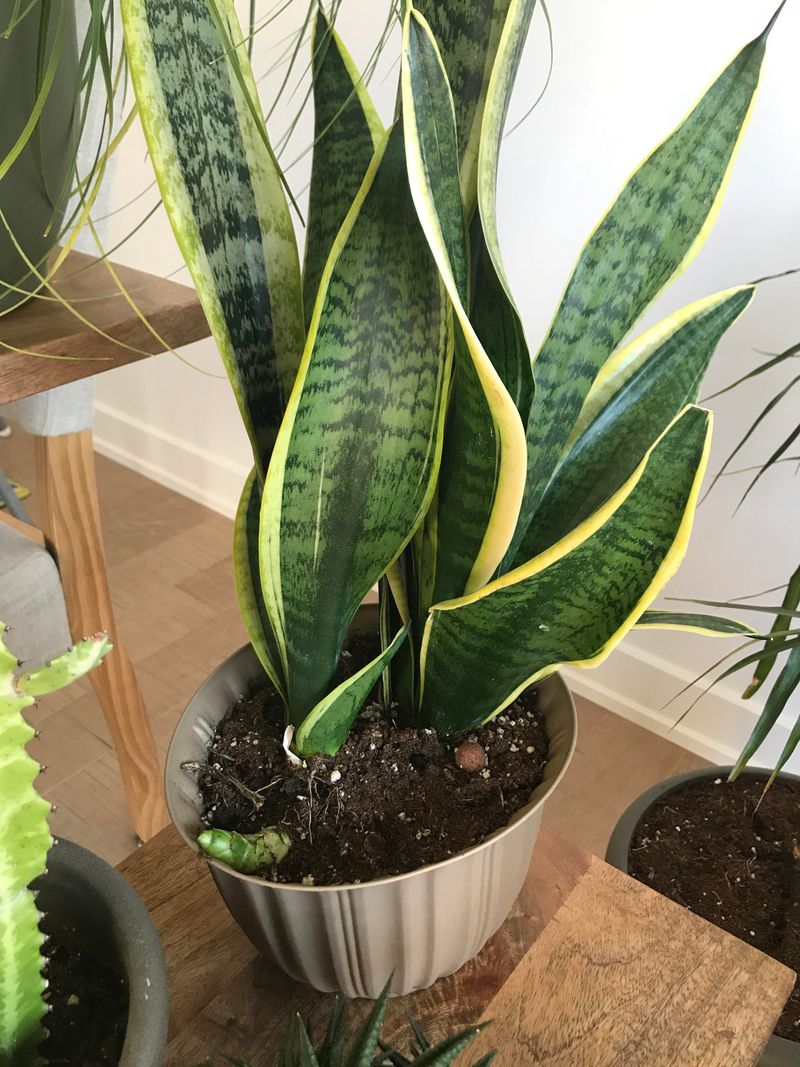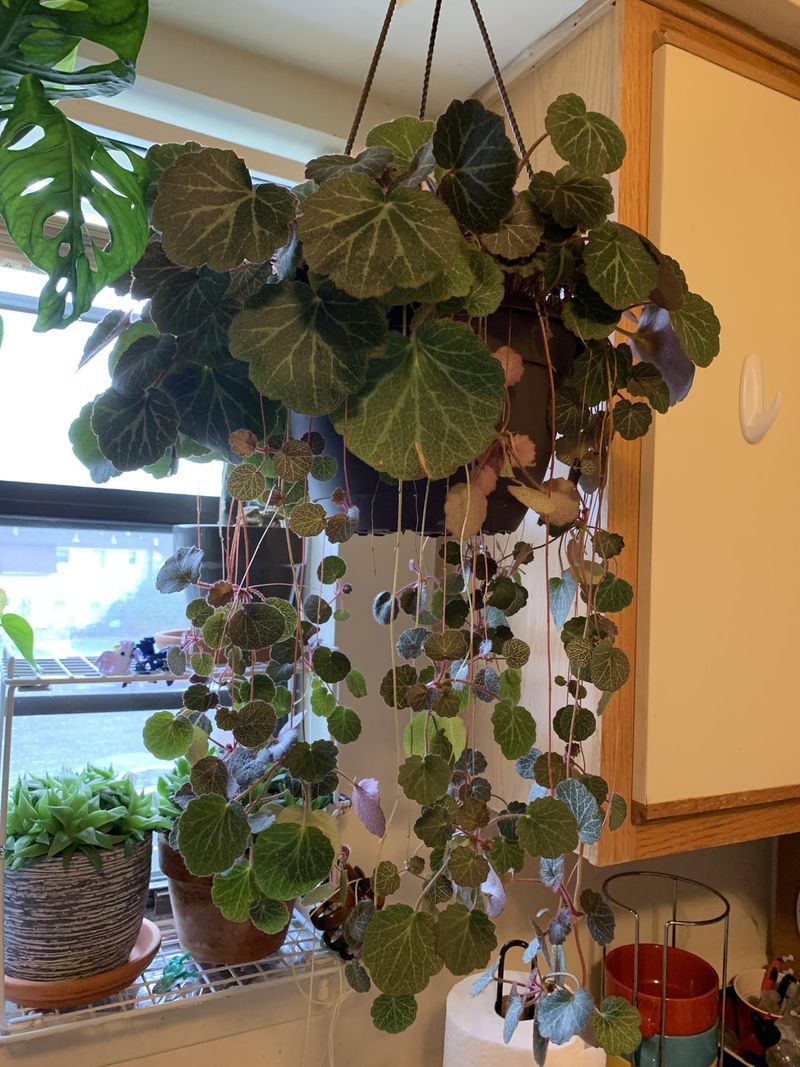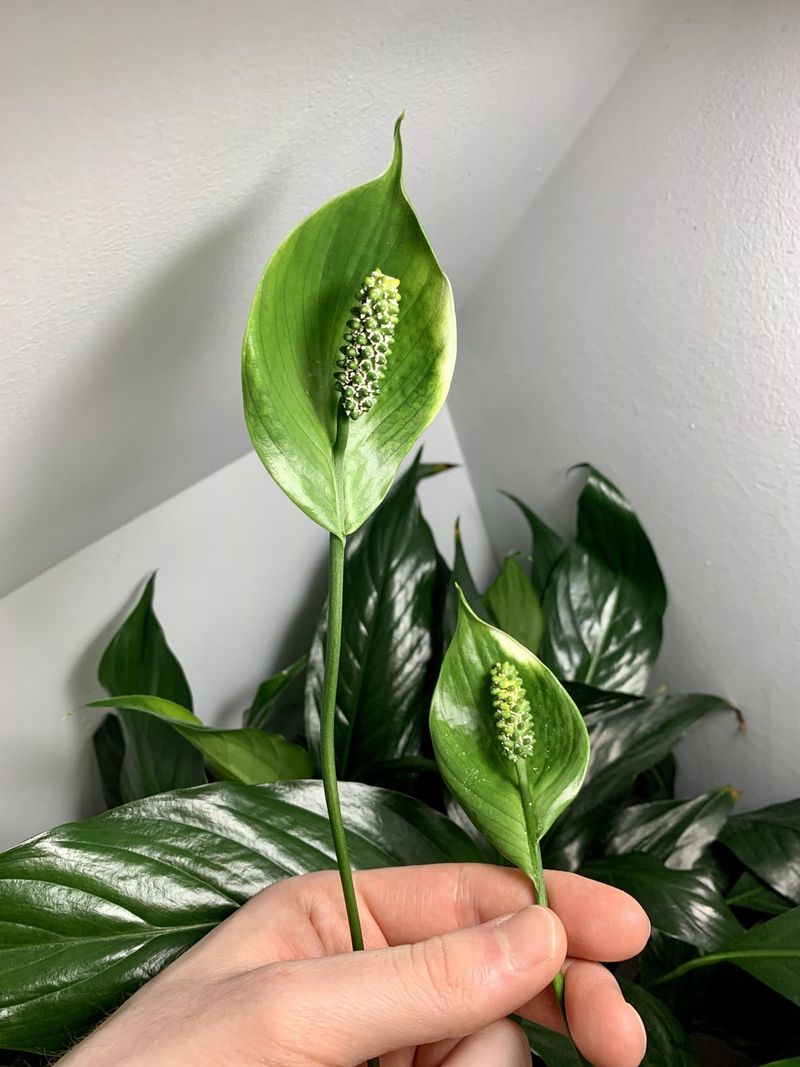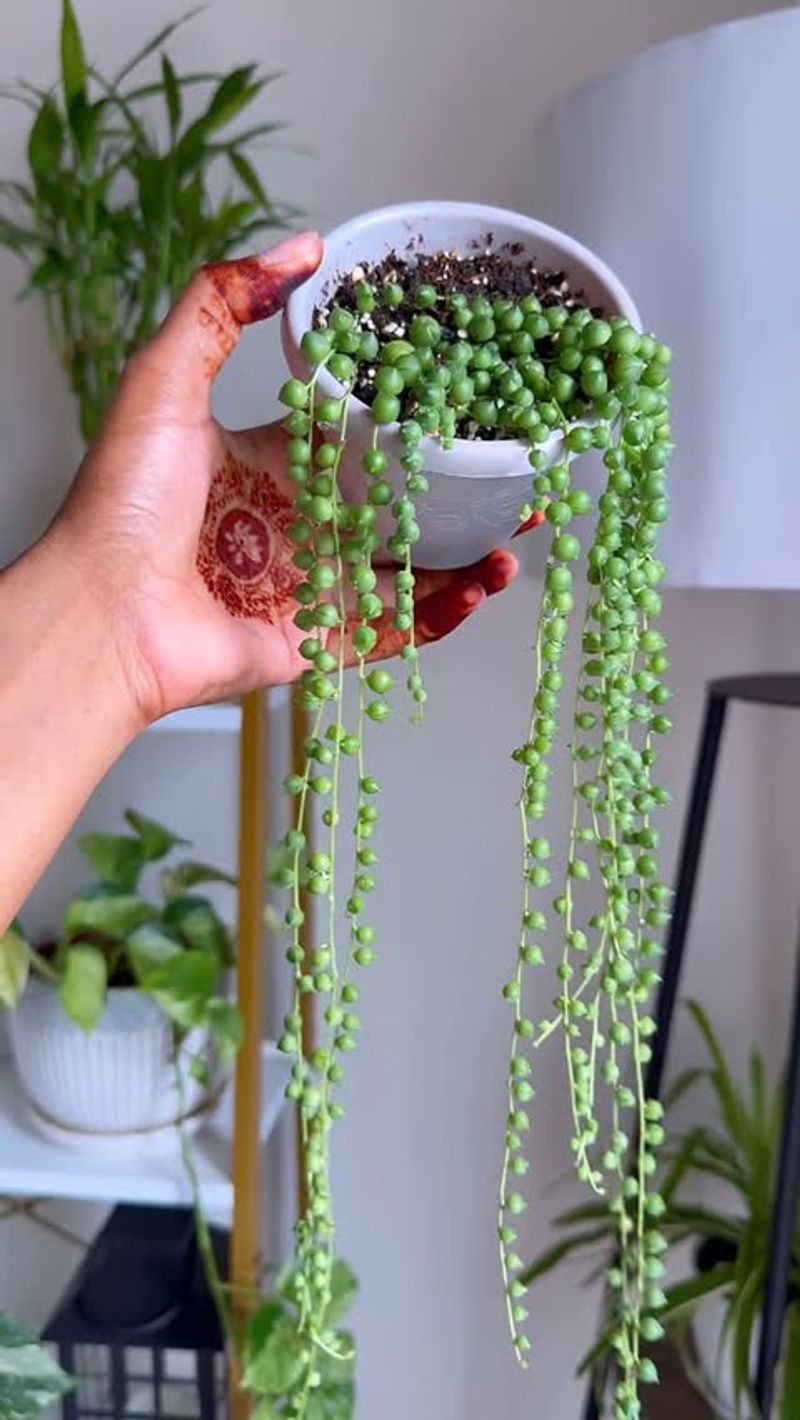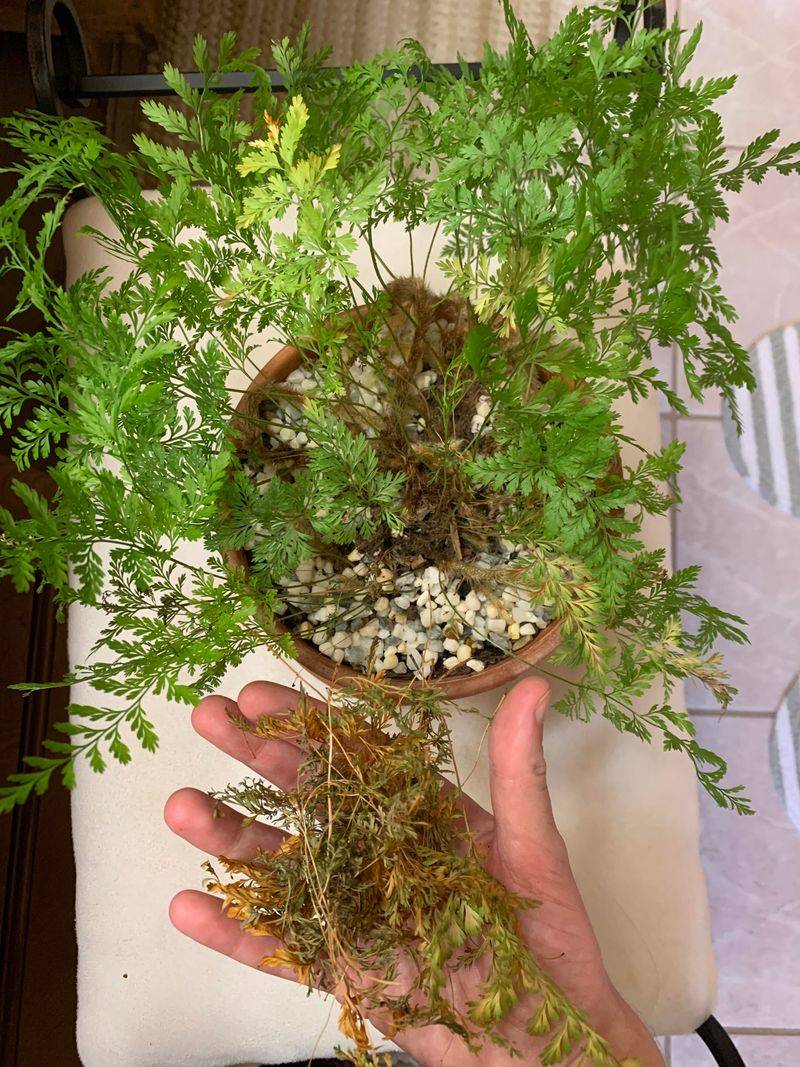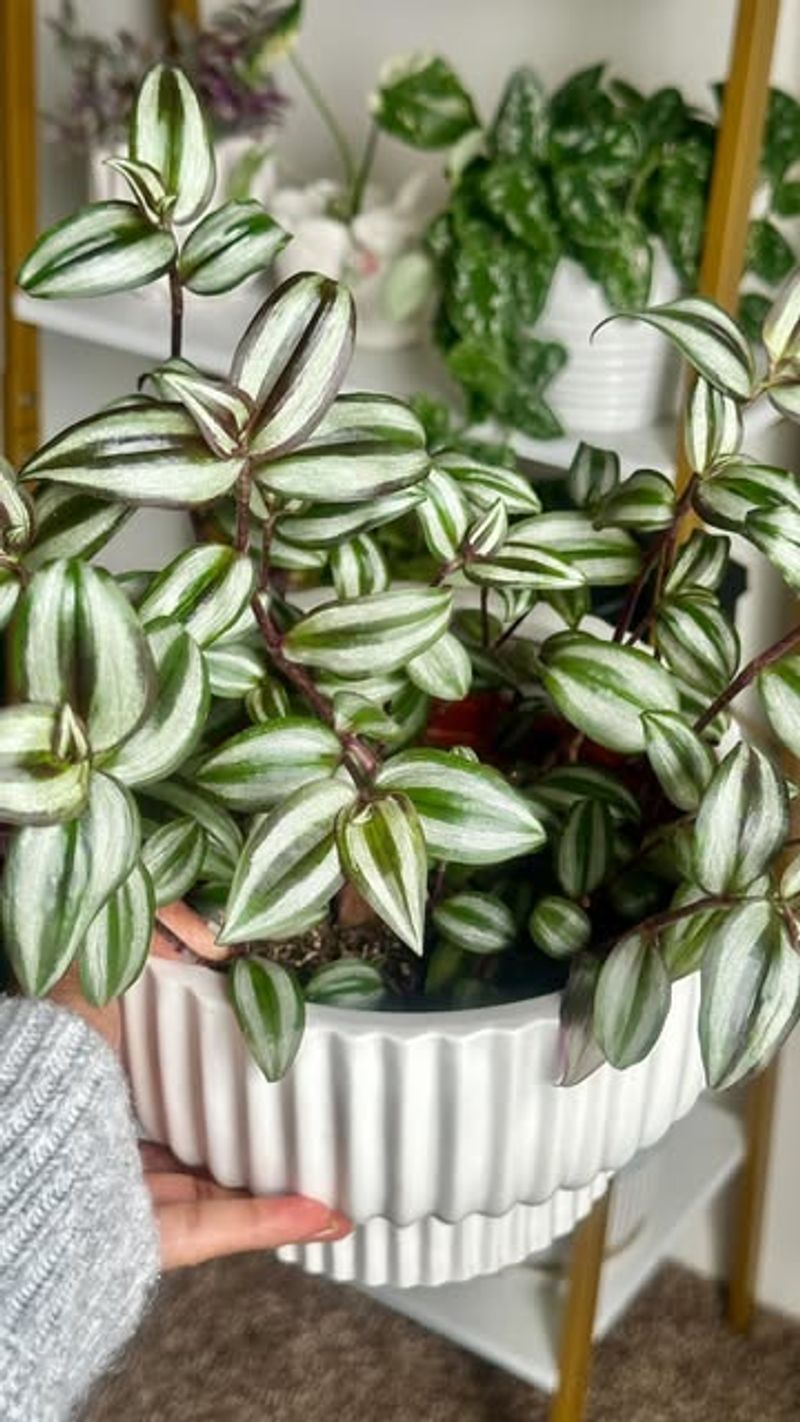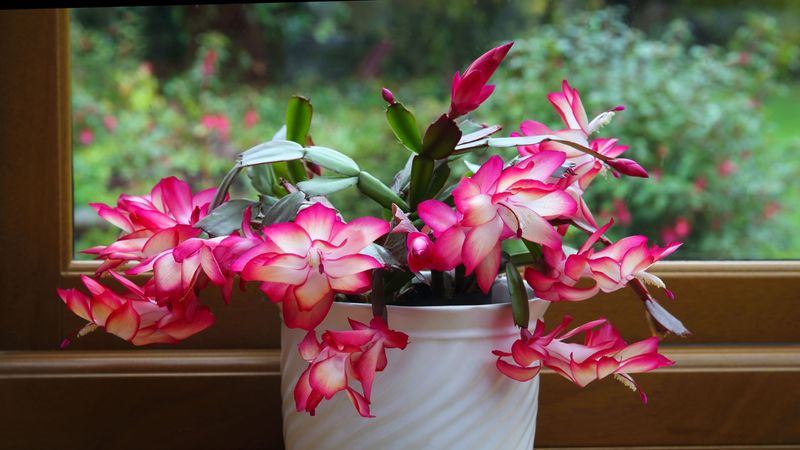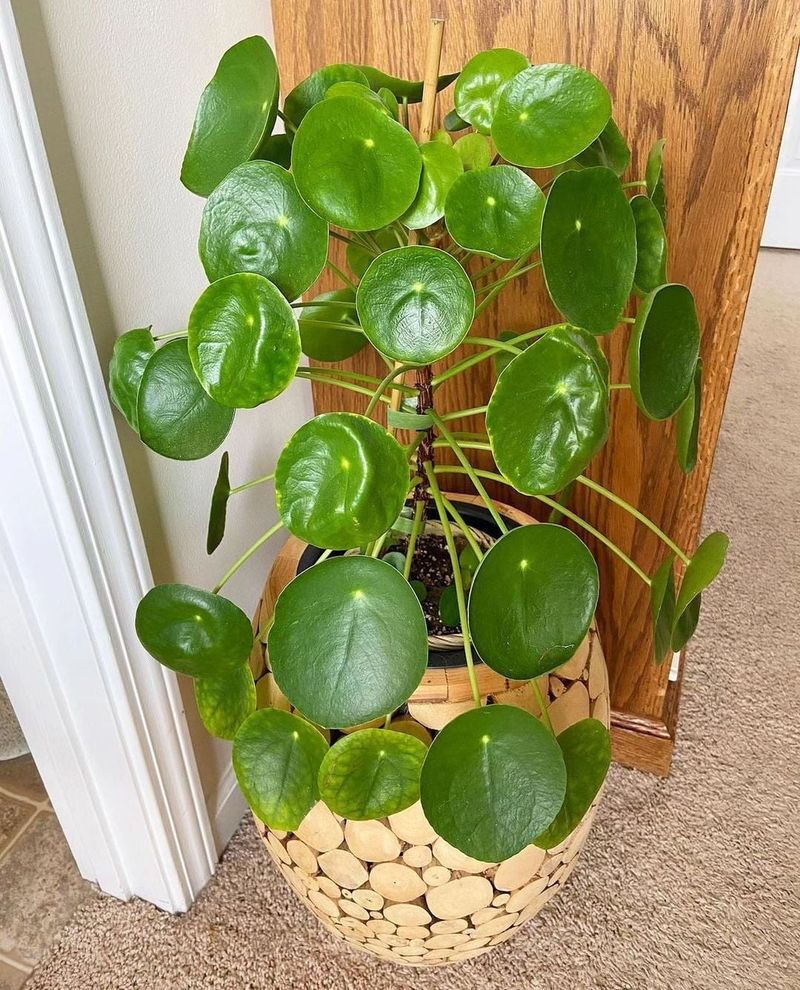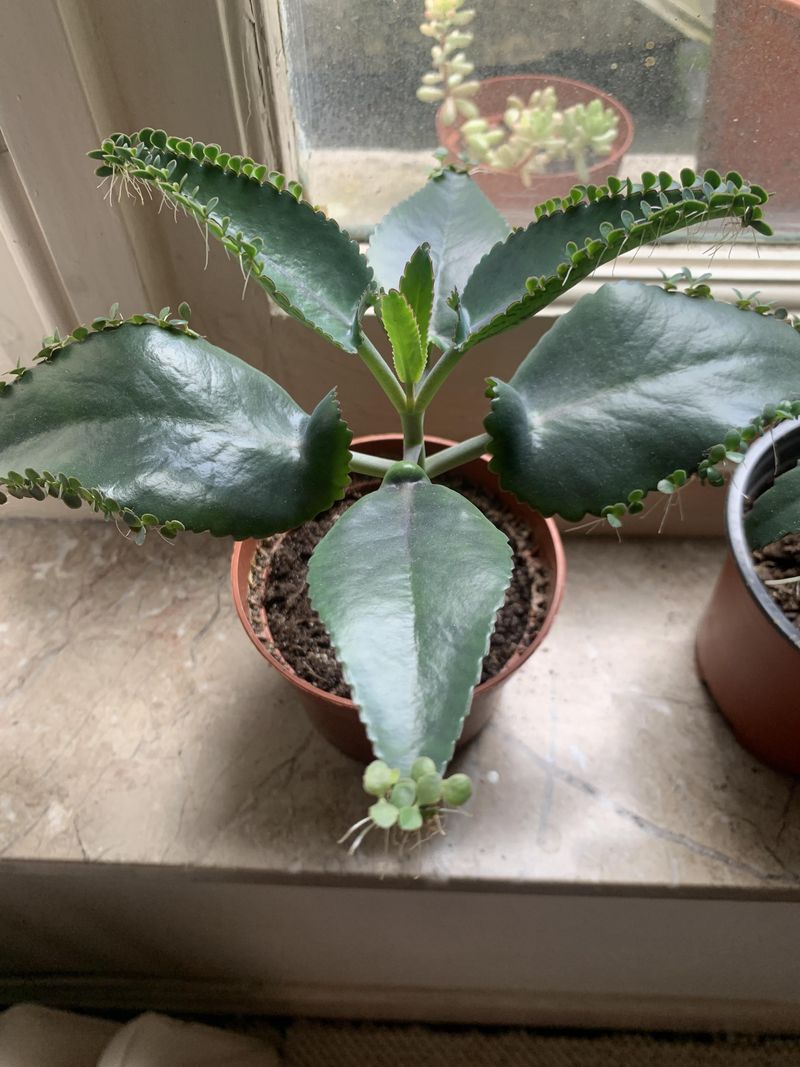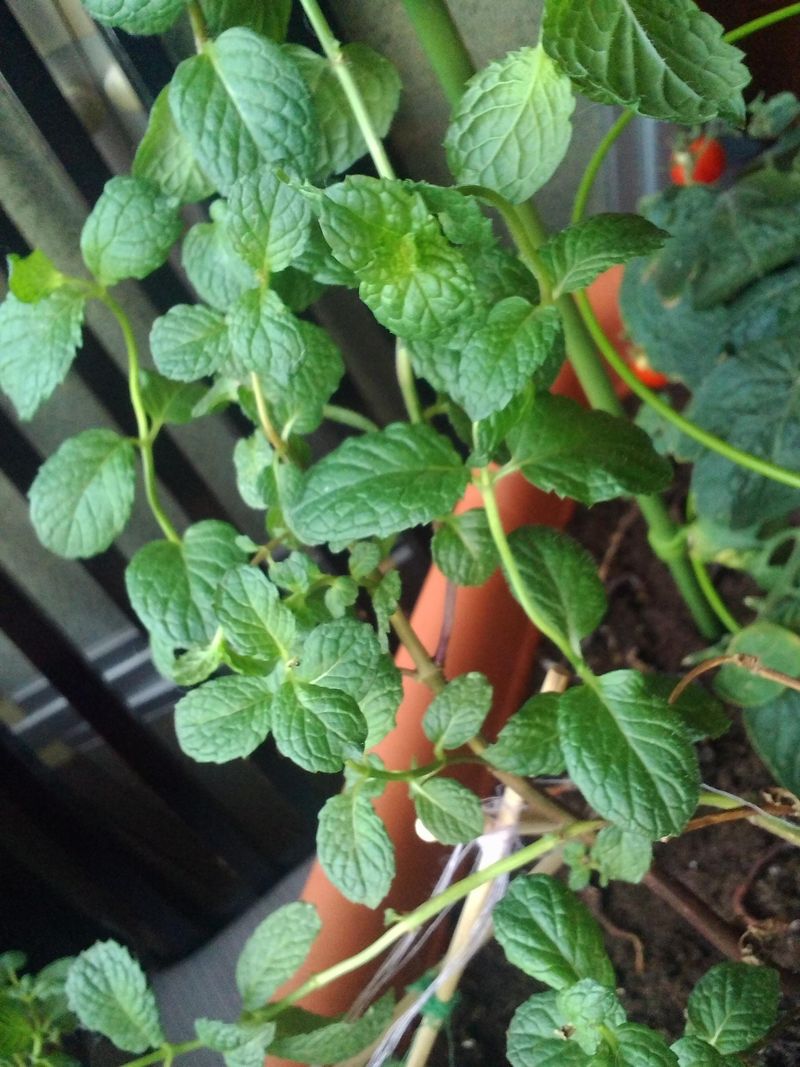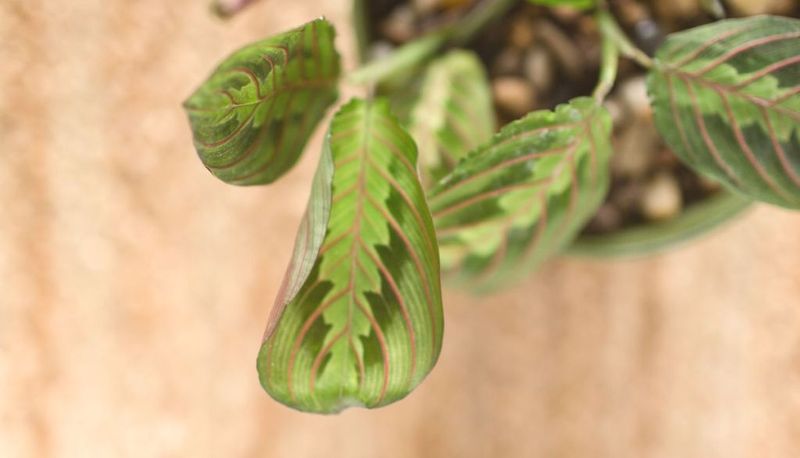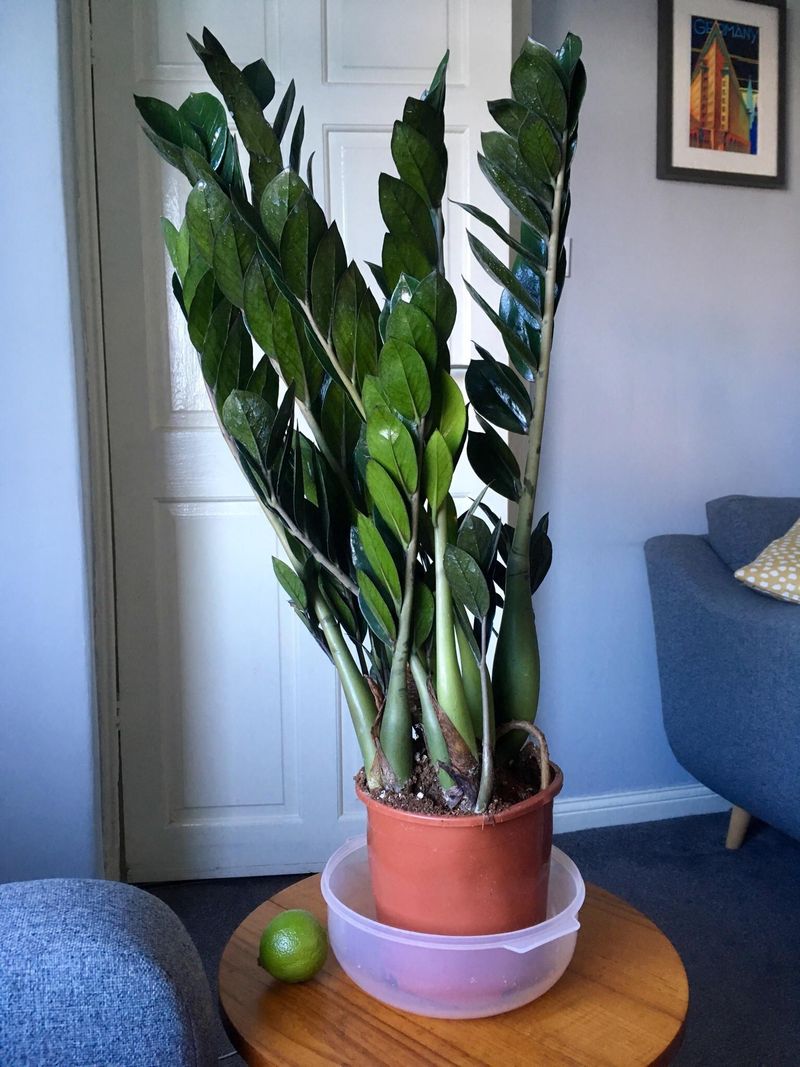Creating your own indoor jungle doesn’t have to cost a fortune—I learned that the fun way. Some of my favorite houseplants basically do the work for you, popping out baby plants left and right. Before I knew it, I had windowsills full of free greenery.
Whether they send out little runners, grow adorable pups, or root from a simple cutting in water, these plants are generous by nature. They’re perfect if you want to expand your collection without another trip to the nursery. And honestly, it’s such a joy to share them.
I’ve gifted baby spider plants and pothos cuttings to friends, and it always sparks a smile. These plants don’t just grow—they help your plant-loving circle grow too.
1. Spider Plant
Those long arching stems aren’t just for show—they’re busy making baby plants! The tiny plantlets that dangle from the mother plant come complete with their own root systems.
I’ve filled three rooms with plants that all came from one original spider plant I bought five years ago. Simply snip off the babies and place them in water or soil.
They’re virtually impossible to kill, making them perfect for beginners who want quick results without much effort.
2. Pothos
A single pothos stem can transform into dozens of new plants with minimal effort. Each node along the vine has the potential to sprout roots when placed in water.
My kitchen windowsill constantly hosts little jars of pothos cuttings. The satisfaction of watching those first white roots emerge never gets old, even after creating countless new plants.
Within weeks, you’ll have fully rooted plants ready to pot up or share with friends who admire your ever-expanding collection.
3. Pilea Peperomioides
Nicknamed the Chinese Money Plant or Friendship Plant because it’s so generous with its offspring. Small baby plants pop up from the soil around the mother plant or sometimes directly from the stem.
The first time little pups appeared around my pilea, I thought something was wrong! Now I eagerly check for new growth each week, carefully separating babies once they reach about 2 inches tall.
Each tiny disc-shaped leaf on a new pup feels like finding money—free plants that maintain the same quirky charm as their parent.
4. Aloe Vera
Beyond its medicinal properties, aloe vera is a champion at producing offshoots. The pups grow from the base of the mother plant, creating a cluster that eventually fills the entire pot.
Last summer, I separated twelve babies from my original aloe plant! Each one has grown into a healthy specimen that provides soothing gel for kitchen burns and sunburns.
Gently pull away the soil to separate these pups when they’re a few inches tall, and you’ll have an aloe farm in no time.
5. Snake Plant
Beneath the soil, snake plants are busy plotting their expansion through spreading rhizomes. New shoots emerge around the original plant, sometimes even pushing against the sides of the container.
One snake plant I bought four years ago has since been divided into seven separate plants. Their structural leaves add modern flair to any room while requiring almost no maintenance.
You can also propagate them by cutting leaf sections and placing them in soil—though this method takes longer than harvesting the natural pups.
6. Strawberry Begonia
Don’t let the name fool you—this isn’t a strawberry or a begonia, but it spreads just as readily as garden strawberries. Long red runners extend from the mother plant, each ending in a tiny new plantlet.
Watching the runners cascade down my bookshelf is like seeing a natural plant factory in action. Each new baby forms its own roots while still attached to the mother plant.
Once established, simply snip the runner and pot up your new plant. From one original plant, I’ve created over twenty in just two years.
7. Peace Lily
Peace lilies multiply through natural division as the plant matures. What starts as a single plant gradually becomes a clump of multiple crowns, each capable of living independently.
The first time I repotted my peace lily, I was surprised to find it had become three distinct plants sharing the same pot. Separating them during repotting gives each section room to grow.
Unlike some plants on this list, peace lilies multiply at a more moderate pace—perfect if you want new plants without being overwhelmed by them.
8. String Of Pearls
Those delicate strands of bead-like leaves grow surprisingly fast, extending several feet in a single growing season. Each strand can be cut into multiple sections to create new plants.
My original 4-inch pot has spawned enough cuttings to fill three hanging baskets around my home. The round succulent “pearls” root readily when placed on moist soil—no special equipment needed.
For fastest results, I’ve found that laying longer strands in a circular pattern on soil creates multiple contact points for rooting.
9. Rabbit’s Foot Fern
The fuzzy rhizomes that give this fern its name are actually its secret to rapid multiplication. These furry “feet” creep over the sides of the pot and can be separated to start new plants.
Unlike other ferns that can be finicky to propagate, these distinctive rhizomes make creating new plants almost foolproof. I’ve successfully shared divisions with three plant-loving friends.
Simply cut a section of rhizome with at least one frond attached, press it into moist soil, and you’ll have a new fern establishing itself within weeks.
10. Inch Plant
Formerly known as Wandering Jew, this trailing beauty earned its new name from how quickly it grows—literally inches per week. The succulent stems root anywhere they touch soil.
After accidentally breaking a stem while watering, I stuck the broken piece in the same pot. Within days, it had rooted and started producing new growth! The purple-backed leaves add vibrant color to any collection.
For a fuller plant, I’ve learned to place several cuttings in the same pot, creating a lush cascade of striped foliage almost immediately.
11. Christmas Cactus
Despite its slow-growing reputation, Christmas cactus multiplies readily through simple stem segment cuttings. Each flat, leaf-like segment can grow into a new flowering plant.
The segments detach easily at their natural joints—sometimes too easily! After dropping a plant and finding segments scattered across the floor, I decided to propagate them all.
Now I have six blooming plants that flower at slightly different times, extending the season of those gorgeous pink and red blossoms that brighten winter months.
12. Chinese Money Plant
Not to be confused with Pilea, the Chinese Money Plant (Pachira aquatica) multiplies through an unusual method—you can braid or twist multiple young trunks together to create a single plant that grows thicker over time.
Starting with three small plants, I’ve watched them fuse into what looks like one impressive specimen. The braided trunk creates a conversation piece that guests always notice.
For more traditional propagation, cuttings from the top of the plant root easily in water, creating new specimens with the same umbrella-like leaf formation.
13. Mother Of Thousands
No plant lives up to its name quite like this one! Tiny plantlets develop along the edges of each leaf, complete with their own roots, ready to drop and grow wherever they land.
I’ve actually had to be careful with this one—the babies appear so prolifically that they can become invasive indoors. One plant quickly turned into dozens scattered throughout my collection.
Keep this one away from other potted plants unless you want it to colonize them all. Its reproductive success makes it perfect for plant enthusiasts who want instant results.
14. Herbs Like Mint
Bringing culinary herbs indoors provides both fresh flavors and rapidly expanding plants. Mint especially spreads through underground runners that quickly fill any container.
My kitchen windowsill mint plant needed dividing just three months after purchase. The aggressive root system had completely taken over its pot, sending up new shoots everywhere.
Simply pull apart sections with roots attached to create new plants. Basil, oregano, and thyme also multiply quickly from stem cuttings placed in water.
15. Prayer Plant
The distinctive red-veined leaves of prayer plants hide a secret—these plants readily multiply through division. As they mature, multiple crowns develop that can be separated during repotting.
What started as a single-stemmed plant in my bathroom has transformed into three full plants over two years. The daily leaf movements—raising at night and lowering during day—make each new plant equally fascinating.
For even faster results, stem cuttings with at least two leaves will root in water within weeks, developing the same dramatic foliage as the parent plant.
16. ZZ Plant
Beneath the surface, ZZ plants develop potato-like rhizomes that gradually multiply underground. These energy storage structures eventually produce new stems, creating a fuller plant.
During repotting last spring, I discovered my ZZ had developed four distinct rhizome clusters. Carefully separating them gave me additional plants that grew just as vigorously as the original.
Individual leaves can also grow into new plants when partially buried in soil—though this method requires several months of patience before new growth appears.

